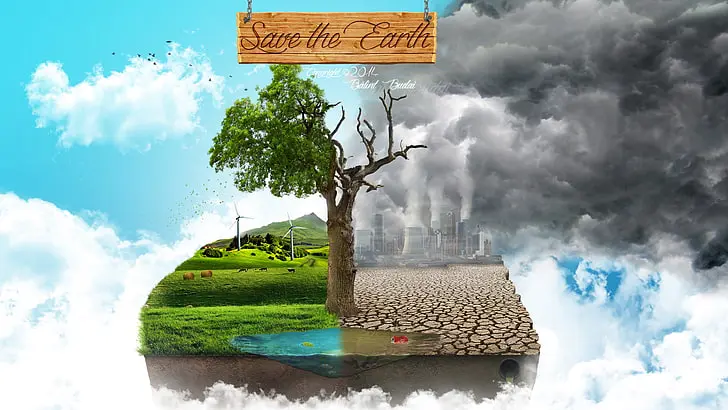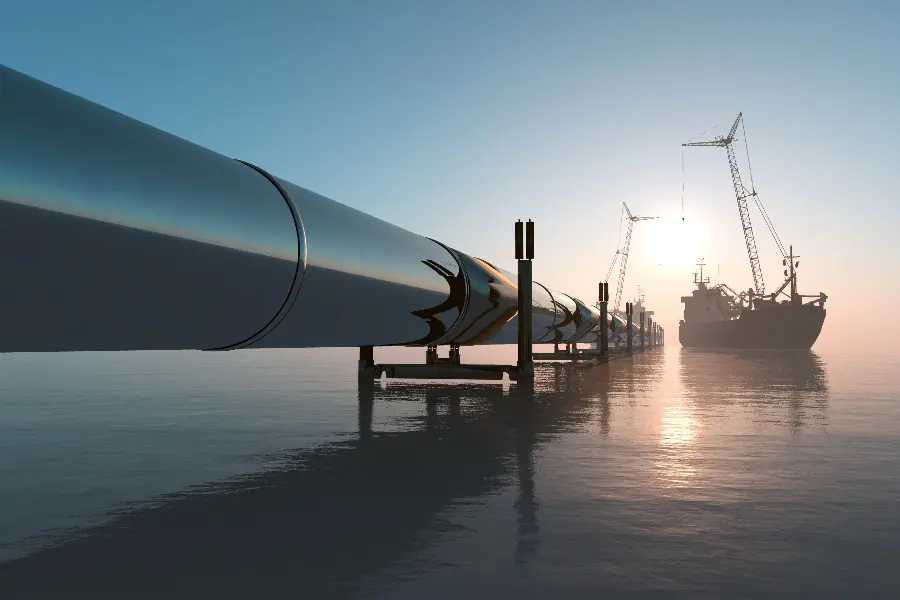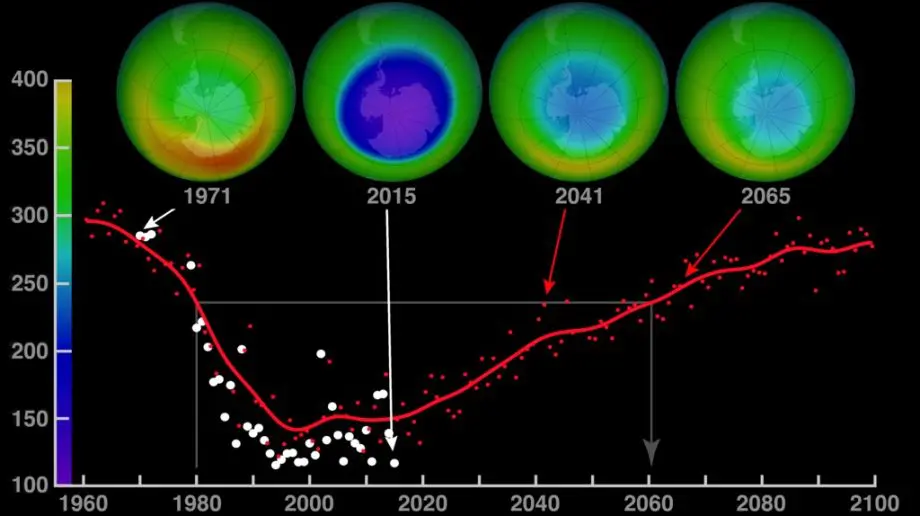
Explore the intricacies of point vs nonpoint pollution in our comprehensive guide. Discover their impacts, differences, and mitigation strategies!
So, you’ve heard the terms point vs nonpoint pollution, but what do they really mean? Let’s dive into this together!
It’s a complex topic that affects our everyday lives and the world around us.
Understanding it helps us make better decisions for our environment and future generations. Ready for this journey? Let’s begin!
Point vs Nonpoint Pollution
Have you ever wondered about the difference between point and nonpoint pollution? Well, you’re in the right place!
This post will take you on an enlightening journey, unraveling the complex world of pollution.
We’ll dive into the definitions, discuss their environmental impact, and shine a light on some real-world examples.
But that’s not all, we’ll also compare these two types of pollution, visit some interesting case studies, and explore potential solutions and strategies to mitigate their effects.
There’s a lot to cover, so let’s jump right in!
Definition of Pollution
Let’s start with the basics, what exactly is pollution? Simply put, pollution occurs when harmful or excessive levels of substances are introduced into Earth’s environment.
These substances, or pollutants, can take the form of anything from chemicals and heat to noise and light.
They can originate from a wide variety of sources, such as factories, cars, and even everyday household activities.
The effects of pollution can be damaging, often leading to environmental degradation, harm to human health, and disruption of ecosystems.
Brief Overview of Point and Nonpoint Pollution
Now that we’re clear on what pollution is, let’s delve into the two main types we’re discussing today: point and nonpoint pollution.
Point source pollution, as the name suggests, comes from a single, identifiable point or location.
Imagine a pipe discharging waste from a factory into a river. That’s a classic example of point source pollution.
On the other hand, nonpoint source pollution is a bit trickier to pin down.
This type of pollution comes from multiple, diffuse sources, making it difficult to identify a single point of origin.
An example could be runoff from urban or agricultural areas that carries pollutants into the water body.
Stay with me, we’ll explore these two types of pollution in more depth as we go along. Let’s keep going, shall we?
Understanding Point Source Pollution
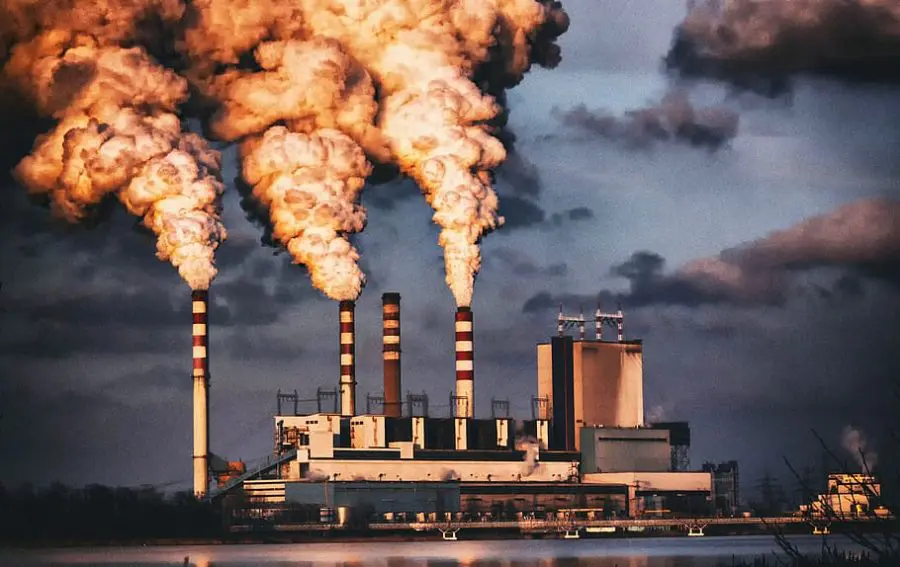
Ready to take a closer look at point source pollution? I promise it’s a lot more fascinating than it might sound at first.
This type of pollution might seem straightforward, but there’s more to it than meets the eye.
From the impacts it has on our environment to the ways we work to regulate and control it, point source pollution is a vital topic to understand.
So, let’s roll up our sleeves and dive right into it!
Definition and Examples
Point source pollution, as we briefly mentioned, comes from a single, identifiable source.
It’s like the bad guy in a movie who leaves a signature at the scene of the crime, very traceable.
Classic examples include industrial facilities like factories and power plants, which might discharge pollutants directly into water bodies via pipes or ditches.
Similarly, sewage treatment plants releasing treated water into rivers, or oil spills from a tanker, also fall into this category.
Impact on the Environment
The environmental impact of point source pollution can be significant and varies depending on the type and amount of pollutants being discharged.
Water quality is often the first casualty, with potential issues ranging from nutrient pollution that causes harmful algal blooms, to toxic substances harming aquatic life.
Soil contamination is another issue, which can affect plant health and seep into groundwater.
Moreover, this pollution type can also contribute to air pollution, releasing harmful gases into the atmosphere.
Regulations and Control Measures
Now, let’s talk about how we manage point source pollution. Thankfully, due to its traceable nature, regulatory policies have been put in place to control it.
In the U.S., for instance, the Environmental Protection Agency (EPA) enforces the Clean Water Act, which requires point sources discharging pollutants into waters to obtain a permit.
The act also sets the standards for industrial waste treatment and disposal.
Globally, many countries have similar regulatory bodies and laws in place.
These measures help to limit the quantity and type of pollutants that can be legally discharged, playing a critical role in protecting our precious ecosystems.
Understanding Nonpoint Source Pollution
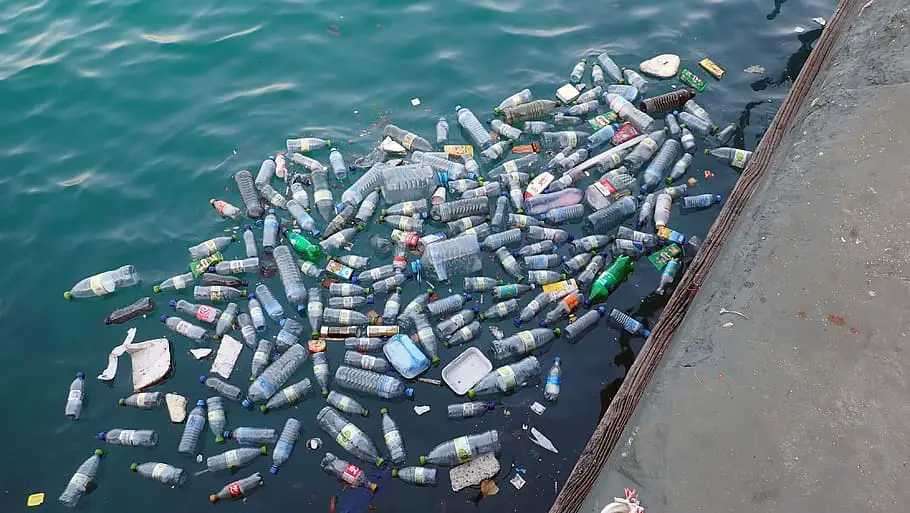
Are you ready to dive into the other side of the coin? Let’s talk about nonpoint source pollution.
This one’s a bit more elusive than its point source counterpart, but it’s just as important if not more to understand.
Nonpoint source pollution sneaks into our lives in ways you might not expect, and that’s exactly why we need to shed some light on it.
Let’s unravel the mystery together, shall we?
Definition and Examples
Alright, let’s dive into the nitty-gritty. Nonpoint source pollution comes from numerous diffuse sources rather than a single, identifiable one.
Think of it as a crowd of people, all dropping litter as they walk. You can’t point out a single person as the source of all the litter, right?
That’s how nonpoint source pollution works. A prime example is agricultural runoff.
When it rains, the water can pick up and carry away fertilizers and pesticides from farms, eventually depositing them into our rivers, lakes, and oceans.
Similarly, urban runoff from our cities, carrying everything from oil to heavy metals, is another widespread source of nonpoint pollution.
Impact on the Environment
Nonpoint source pollution has a sneaky way of causing havoc in our environment.
It plays a significant role in water quality degradation, often leading to nutrient pollution that can cause harmful algal blooms and dead zones in water bodies.
Nonpoint source pollution can also result in soil contamination, affecting agricultural productivity and disrupting ecosystems.
The pollutants involved, such as heavy metals, pesticides, and toxic substances, can have long-term detrimental effects on both wildlife and human health.
Challenges in Regulation and Control
Regulating and controlling nonpoint source pollution is, to put it mildly, a bit of a headache. Why, you ask?
Well, because it comes from so many diffuse sources, it’s much harder to pin down and control than point source pollution.
Implementing regulatory policies is challenging because it’s often not clear who should be held responsible.
Moreover, many nonpoint sources, like agricultural and urban runoff, are tied to essential human activities.
Despite these challenges, there are efforts to manage this type of pollution, primarily through conservation practices and sustainable land management strategies.
But, as we’ll explore later, more needs to be done.
Point vs Nonpoint Pollution: A Comparative Analysis
Now that we’ve gotten to know both point and nonpoint pollution, how about we line them up side by side and take a good look?
Comparing these two types of pollution can help us better understand their unique traits, how they affect our environment, and why controlling them requires distinct approaches.
It might feel like we’re getting into the weeds a bit, but trust me, this comparison will help make everything clearer.
So, are you ready for the face-off? Let’s get to it!
Differences in Origin and Identification
First up, let’s talk about where these two types of pollution come from and how we identify them.
Point source pollution is the straightforward one. It comes from a single, identifiable source like factories, sewage treatment plants, or oil tankers.
It’s like a signature on a letter; you know exactly where it’s coming from.
Nonpoint source pollution, on the other hand, is more like an anonymous note.
It comes from multiple, diffuse sources, making it much harder to pinpoint its exact origin.
Examples include runoff from agricultural fields or city streets, atmospheric deposition, and even sediment pollution from construction sites.
Differences in Impact and Control
When it comes to impact and control, the differences continue.
Both types can negatively affect water quality, air, and soil, but the manner and extent can vary.
Point source pollution tends to be more concentrated and, thus, can cause acute damage in specific areas.
However, due to its identifiable nature, control measures like regulatory policies can be more effectively applied.
On the flip side, the impacts of nonpoint source pollution are usually spread out over larger areas and may accumulate over time, leading to chronic environmental issues.
Because it comes from so many different places, controlling it is quite a challenge, requiring broad strategies such as conservation practices and sustainable land use planning.
Which is More Harmful?
Ah, the million-dollar question: which is more harmful, point source or nonpoint source pollution?
Well, it’s not a simple answer. Point source pollution can cause significant harm due to its concentrated nature.
However, its identifiable source makes it easier to regulate and manage.
Nonpoint source pollution, while typically less concentrated, can be more insidious.
Its diffuse nature makes it harder to control, and its impacts, such as nutrient pollution and soil erosion, can accumulate over time, leading to significant long-term damage.
So, both types are harmful in their own ways. It’s like comparing apples and oranges. They’re different, but both need our attention and action.
Case Studies
Now that we’ve got the theory down, how about we take a look at some real-world scenarios?
After all, case studies offer invaluable insights, providing us with concrete examples of how point and nonpoint pollution operate in the world and how we can tackle them.
They’re like the stories that bring the theory to life. So, buckle up, and let’s delve into some real-life tales of triumphs and challenges in the world of pollution control!
Successful Point Source Pollution Control
Let’s start with a success story. One of the notable triumphs in managing point source pollution was the implementation of the Clean Water Act in the United States.
Prior to the act, untreated sewage was frequently dumped into water bodies, leading to a significant decline in water quality.
With the introduction of this act, wastewater treatment plants now need to comply with certain standards before they can discharge their treated water.
This led to a significant decrease in the levels of harmful pollutants entering the water bodies. What a win, right?
The Pervasive Problem of Nonpoint Source Pollution
Unfortunately, the story of nonpoint source pollution isn’t as uplifting.
An example that comes to mind is the issue of agricultural runoff. As farming practices have intensified globally, the use of fertilizers and pesticides has skyrocketed.
When it rains, these substances can get washed off the fields and into nearby water bodies, leading to nutrient pollution, among other issues.
This type of pollution has caused widespread water quality degradation and is notoriously difficult to manage due to the diffuse nature of its sources.
It’s a challenging issue and one that highlights the importance of developing effective strategies to manage nonpoint source pollution.
Solutions and Mitigation Strategies
Despite the challenges we’ve discussed, it’s not all doom and gloom.
Actually, there are numerous solutions and strategies we can implement to mitigate both point and nonpoint pollution.
From innovative technologies to policy measures, these approaches can significantly reduce pollution’s impact on our environment.
But let’s not just talk about it in the abstract, let’s dive into the practical details.
Are you ready to explore these solutions? Let’s start our journey towards a cleaner and healthier planet!
Strategies for Point Source Pollution Control
When it comes to tackling point source pollution, a range of strategies can be employed.
A great starting point is implementing stricter regulations and enforcing them.
Laws such as the Clean Water Act in the US have proven effective in regulating discharges from identifiable sources like factories or sewage treatment plants.
Another strategy is the use of technological advancements.
For example, factories can install advanced waste treatment facilities that can reduce the amount of pollutants discharged into the environment.
Also, we can look at renewable energy sources that produce fewer pollutants to begin with.
And last but not least, corporate responsibility can go a long way.
Encouraging industries to adopt sustainable practices can significantly reduce the amount of pollution generated.
Strategies for Nonpoint Source Pollution Control
Now, nonpoint source pollution control is a bit trickier because of its diffuse nature. But that doesn’t mean it’s a lost cause. Quite the contrary!
One of the most effective ways to control nonpoint source pollution is through sustainable land management.
This includes practices like creating buffer zones along water bodies to absorb pollutants from runoff, practicing crop rotation to reduce the use of fertilizers, or implementing green infrastructure in urban areas to absorb and filter rainwater.
Education also plays a crucial role.
Raising public awareness about the sources and impacts of nonpoint source pollution can motivate people to make changes in their daily lives, like using fewer chemicals in their gardens or properly disposing of used motor oil.
Finally, although challenging, there is also a role for regulation.
For example, urban planning rules can require the installation of stormwater management systems to reduce runoff pollution from cities.
Each of these strategies plays a part in the larger puzzle of controlling nonpoint source pollution. It’s a multifaceted approach, but every bit helps!
Point vs Nonpoint Pollution FAQs
After digging so deep into the world of point and nonpoint pollution, it’s natural to have a few questions buzzing around in your head.
And you know what? That’s great! Asking questions is how we continue to learn and understand complex issues like pollution.
So, in this section, we’ll address some of the most frequently asked questions about point and nonpoint pollution.
It’s like a friendly chat where we get to clear up any lingering curiosities. Ready for the Q&A? Let’s go!
Q: Why is point source pollution easier to control than nonpoint source pollution?
A: Good question! Point source pollution is easier to control mainly because its source is identifiable.
It’s like having a direct address to send a letter to. For example, we can identify a factory or a sewage treatment plant as a source and implement control measures directly at that location.
With nonpoint source pollution, the sources are more diffuse (like runoff from city streets or agricultural fields), making it more difficult to control.
Q: Which is worse: point source pollution or nonpoint source pollution?
A: It’s a bit like comparing apples and oranges. Both can be harmful but in different ways.
Point source pollution can be more concentrated and cause acute damage in specific areas, but it’s typically easier to regulate and manage.
Nonpoint source pollution, on the other hand, can be less concentrated but more pervasive, impacting larger areas over time and proving harder to manage effectively.
Q: How can individuals help reduce nonpoint source pollution?
A: Great to see you’re thinking about how to make a difference! Individuals can help in several ways.
First, practicing good lawn and garden habits, like using fertilizers sparingly and avoiding pesticides, can reduce the amount of runoff from your yard.
Properly disposing of pet waste and household chemicals can also make a big difference.
Even things like maintaining your car to prevent oil leaks and washing it on the grass (which can absorb runoff) rather than the driveway can help reduce nonpoint source pollution.
Remember, every little bit helps!
Point vs Nonpoint Pollution Conclusion

We’ve journeyed together through the complex worlds of point and nonpoint pollution, haven’t we?
And while it might seem a bit daunting, it’s crucial to remember that knowledge is power.
Now that we understand what these forms of pollution are, their impacts, and how they can be controlled, we’re better equipped to tackle these environmental challenges.
So, as we wrap up this deep dive, let’s take a moment to reflect on the key points we’ve uncovered and where we go from here.
Trust me, it’s worth the trip down memory lane!
Recap of Key Points
Firstly, we unpacked the definitions of pollution, specifically looking at the differences between point and nonpoint pollution.
Remember how we noted that point source pollution comes from identifiable sources, like factories or sewage plants, while nonpoint source pollution is more diffuse, originating from various scattered sources such as agricultural runoff or urban runoff?
We delved into how each type of pollution impacts the environment, with point source pollution often causing localized damage, while nonpoint source pollution can affect broader areas and be a bit trickier to manage.
We then analyzed these two types of pollution side by side. Although they’re both harmful, point source pollution is typically easier to regulate and manage due to its identifiable sources, whereas nonpoint source pollution presents greater challenges due to its diffused sources.
Finally, we explored some effective solutions and strategies to mitigate these types of pollution. From implementing stricter regulations to encouraging sustainable land management practices, we highlighted that everyone, from governments to individuals, has a role to play in combating pollution.
Point vs Nonpoint Pollution Final Thoughts
As we wind down, I’d like to leave you with this thought: tackling point and nonpoint pollution isn’t an insurmountable task.
Yes, it’s challenging, and yes, it might seem like a colossal undertaking, but remember that every effort counts.
And now, armed with a better understanding of these issues, you’re already part of the solution.
By remaining informed and making conscientious decisions in our daily lives, we can each contribute to the global effort of preserving our beautiful planet.
Let’s keep the conversation going, and let’s continue to make a difference, one step at a time.

